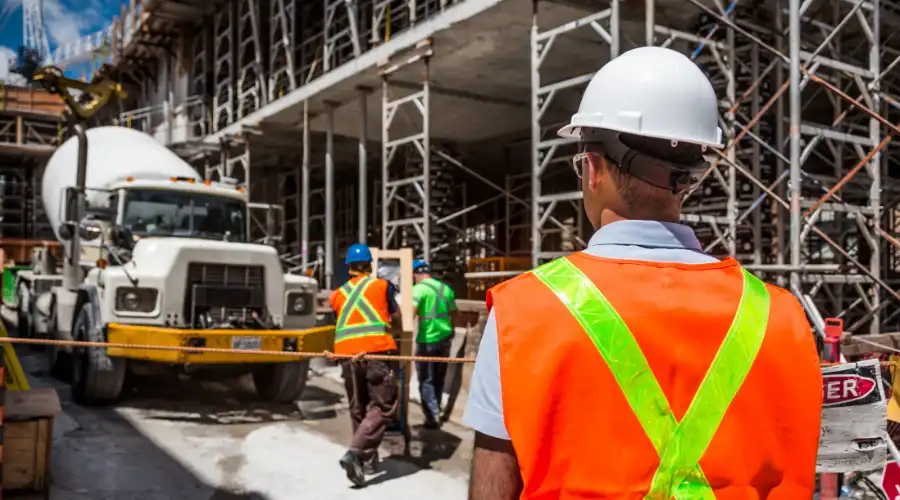Construction litigation is the formal legal process that is undertaken to resolve disputes that arise at any point during a construction project. Common construction disputes may involve owners, contractors, subcontractors, design professionals, materials suppliers, and lenders. Construction litigation addresses the complexity of the modern project with respect to cost, length of time required, safety, and regulatory compliance by providing a mechanism to enforce rights, establish responsibility and accountability, allow projects to continue and not fail.
What Is Construction Litigation
Construction litigation is the legal process used to settle disputes that arise during construction projects, often through court or other official legal procedures. Typical sources of disputes include breach of contract, defective or incomplete work, delays, payment disputes, and changes in the scope of work. If informal negotiations, mediation, or arbitration have all been exhausted, the parties may have no alternative but to go to litigation to recover damages, or compel another party’s performance of its obligations.
Unlike arbitration, which is confidential and not necessarily slow, litigation occurs in public courtrooms under formal procedures, and the courts will hear appeals. Although litigation can require substantially more costs and resources, it is the final resort for a party when all other attempts to reach a resolution have failed.
Types of Construction Lawsuits

Construction Defect Claims
Construction Defects can be latent or patent, consisting of bad material, improper work, or defective design. Owners may have claims against the contractor, the architect, or the engineer for damages resulting from their taking corrective action to improve their property, the loss of value to their property, or the need to correct a code violation. Some defects may not appear for several years after the work is complete, which may involve warranty issues, statute of limitations issues, or discovery issues.
Construction Delay Claims
Delays to a project, whether caused by either the owner or contractor, frequently lead to claims or disputes, particularly if the delay will cause a cost increase, schedule issues, or delay subsequent work on the job. Delay claims arise from many issues, including weather, site conditions (soil conditions, environmental), the owner’s actions, mismanagement by the contractor, poor contractor supervision, or supply chain failure. Concurrent delays can lead to various types of damages depending on the contract terms, including lost rental income, increased financing costs due to project extension, additional labor charges for overtime or double shifts, and liability for liquidated damages.
Breach of Contract Claims
Breach of contract is the main reason for all litigation and occurs when parties fail to fulfill contractual obligations. There are many ways failure may occur: failure to pay; failure to complete the work in a timely manner; failure to submit to specifications; and failure to deliver the correct quantity. A party may seek actual damages, specific performance, or cancellation of the contract, as relief for breach of contract.
Construction Lien Foreclosure Actions
Construction lien (or mechanic’s lien) is a security interest in the property that secures the payment of parties who have supplied services or materials. If these liens are not satisfied, lienholders can enforce liens through foreclosure, often resulting in the sale of the property. Lien laws vary dramatically by jurisdiction, with most having strict time limits for lien filing or contesting a lien.
Construction Lien Exaggeration Claims
When a contractor or supplier falsely inflates the amount sought in a lien, the property owner can file claims seeking to challenge the accuracy or legitimacy of the excess lien amount. These claims seek a reduction in the lien amount, damages for wrongful lien filing, or sanctions for violating statutory requirements.
The Construction Litigation Stages
When thinking about a construction lawsuit, they generally progress as follows:
Case Investigation: The parties gather and review documents, contracts, plans, correspondence and consider liability exposure.
Court Filings: The plaintiff files suit by filing a complaint, followed by the defendant’s response of either an appearance or answer.
Pre-Trial / Discovery: Documentary exchange takes place along with interrogatories, depositions, expert reports and property inspections.
Trial or ADR: the parties may have chance to resolve matters by settlement through mediation or arbitration. If that is not successful, the next step is trial.
Settlement Negotiations: the parties may also negotiate and resolve the issues at any time prior the verdict.
Appeal: the losing party may appeal to higher court to contest legal or factual rulings.
Throughout this whole process, attorneys will navigate the procedural requirements and engage in risk and cost mitigation through other ADR options.
Preventing Construction Litigation
Proactive strategies significantly reduce dispute incidence. Recommended measures include:
- Robust construction Contracts: Clearly define scope, roles, change processes, delays, payment terms, penalties, and dispute remedies.
- Construction Documentation & Communication: Maintain accurate records of site diaries, correspondence, change orders, delay notices. Centralized project management software can assist.
- Benchmarking & Compliance: Track performance metrics and industry standards; ensure regulatory adherence.
- Use of ADR Clauses: Incorporate mediation, arbitration, and dispute boards to resolve disputes before escalation.
- Timely Legal Engagement: Early involvement from legal counsel helps address emerging risks and shape mitigation strategies.
Adopting these measures enhances project discipline and guards against potential litigation.
Conclusion
Construction litigation is a complex area of law, confronted with multi-party agreements, technical performance criteria, strict timelines, and statutory obligations. Although it is an important process for rights enforcement, it can be expensive in a variety of ways. However, with good contractual language, project oversight/monitoring, and alternative dispute resolution methods in place, countless conflicts could potentially be managed without the resolution of litigation – saving costs and the psychological, or political, costs of lost time and reputation.
Frequently Asked Questions (FAQ)
Arbitration is private, typically faster, and binding, whereas litigation is conducted in public courts, follows formal procedures, and permits appeals .
Yes, latent defects uncovered post‑completion can trigger claims under warranty, subject to statutes of limitations.
A DRB is an impartial panel formed at project outset that provides real‑time dispute guidance. It helps resolve disputes early and reduce escalation .

